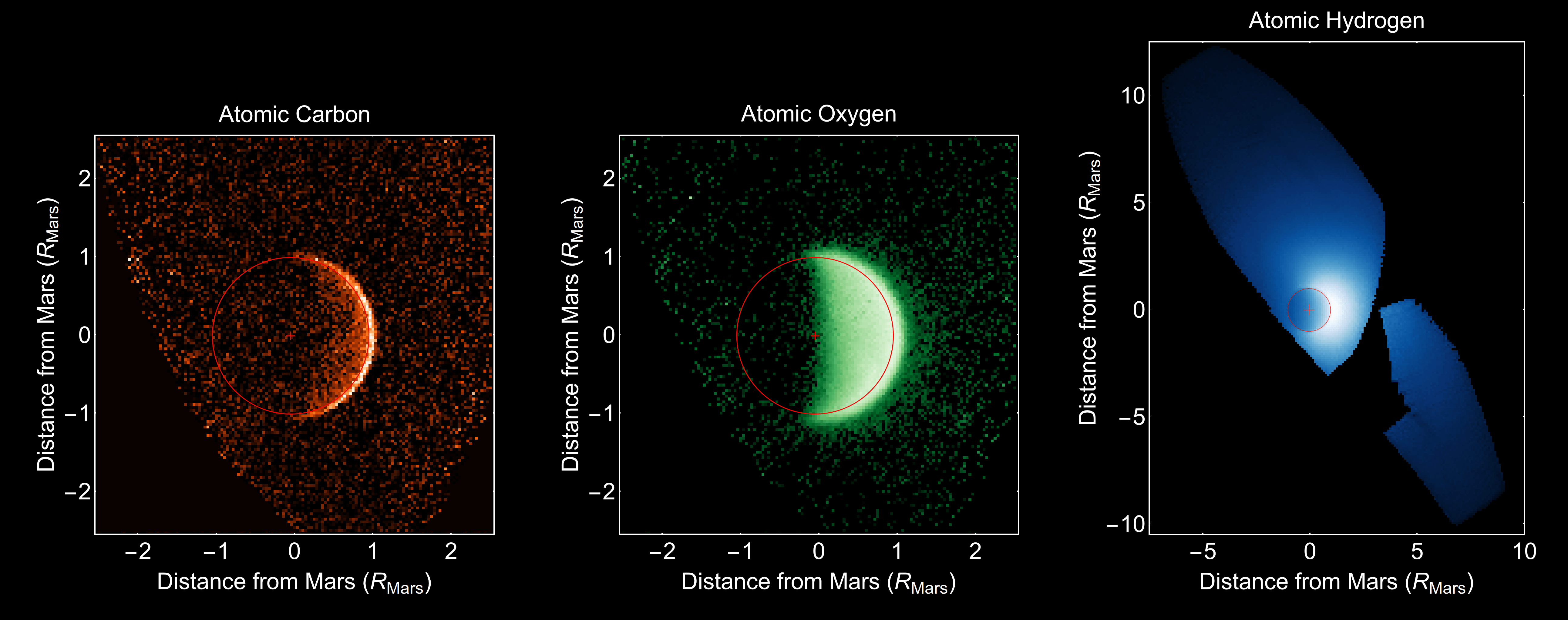It’s been less than a month since NASA’s Mars Atmosphere and Volatile Evolution (MAVEN) spacecraft slipped into orbit. But it’s already provided mission scientists their first look at Mars’ tenuous atmosphere.
“Everything is performing well so far,” said Bruce Jakosky, the mission’s principle investigator, in a news release. “All the instruments are showing data quality that is better than anticipated at this early stage of the mission. The spacecraft is performing beautifully. It’s turning out to be an easy and straightforward spacecraft to fly, at least so far. It really looks as if we’re headed for an exciting science mission.”
Data collected by MAVEN will answer a longstanding puzzle among planetary scientists. There’s ample evidence that early in the Red Planet’s history it had a much denser atmosphere. Rain fell from the sky and water carved its surface. But then the atmosphere vanished, and scientists are unsure why.
One leading theory is that the gas escaped to space, stripped away by the solar wind rushing past. (Click here to see a cool animation of that process.) Here on Earth, our magnetosphere helps protect our atmosphere from the solar wind. But once Mars lost its own magnetosphere, billions of years ago, its atmosphere became vulnerable.
MAVEN’s spectrometers will attempt to determine if hydrogen atoms, torn from water molecules by ultraviolet sunlight, are escaping to space and at what rate. Already, the spacecraft has observed the edges of the Martian atmosphere using its Imaging Ultraviolet Spectrograph (IUVS) camera, which is sensitive to the sunlight reflected by the atoms.
“With these observations, MAVEN’s IUVS has obtained the most complete picture of the extended Martian upper atmosphere ever made,” said team member Mike Chaffin from Colorado University at Boulder.
So far scientists have used IUVS to create a map of Mars’ ozone. “With these maps we have the kind of complete and simultaneous coverage of Mars that is usually only possible for Earth,” said team member Justin Deighan, also from CU-Boulder.
There will be about two weeks of additional instrument calibration and testing before MAVEN starts its primary science mission in early to mid-November. It will then likely take a few additional months to build up enough measurements to have a clear sense of what’s going on. But the initial results are promising.

